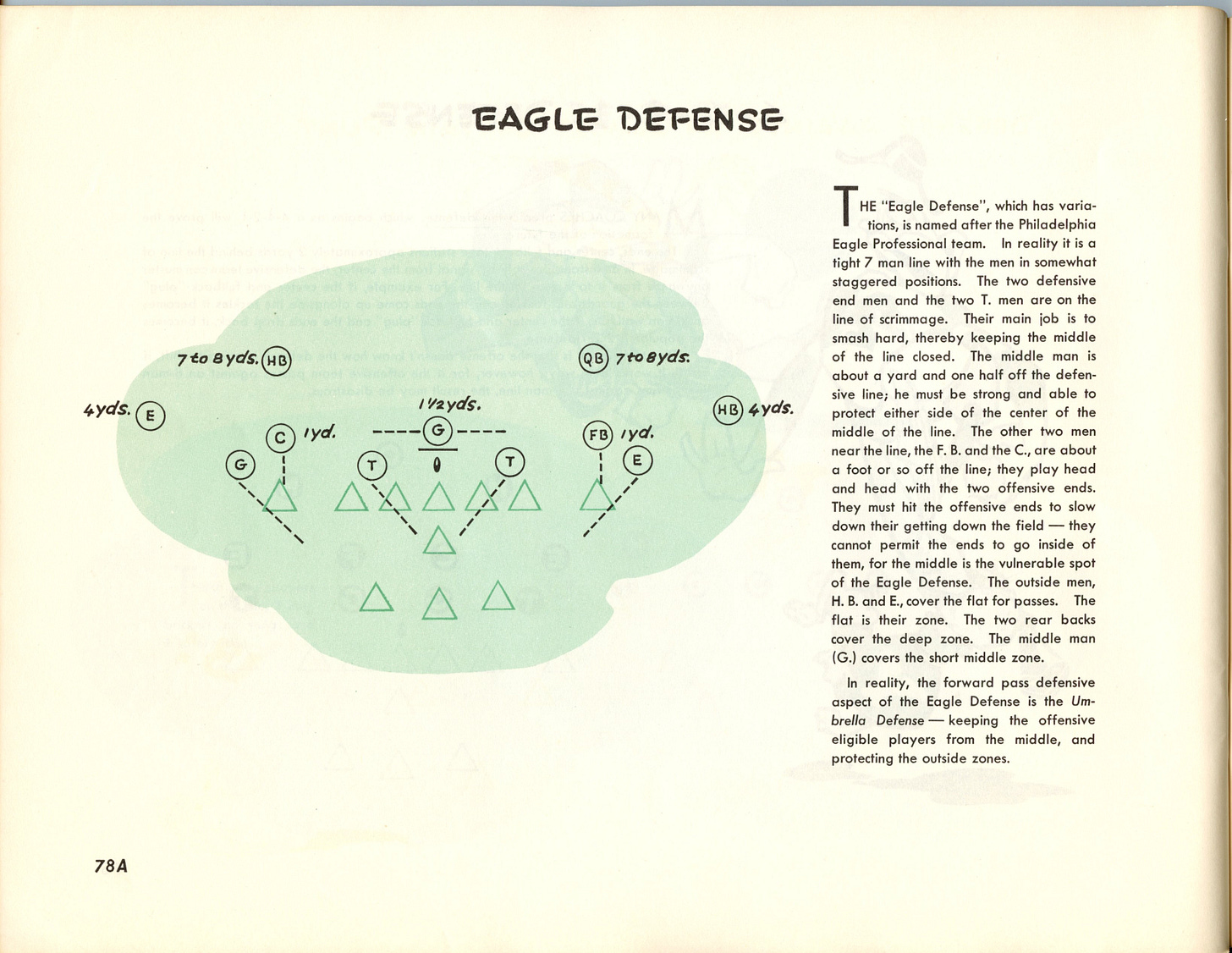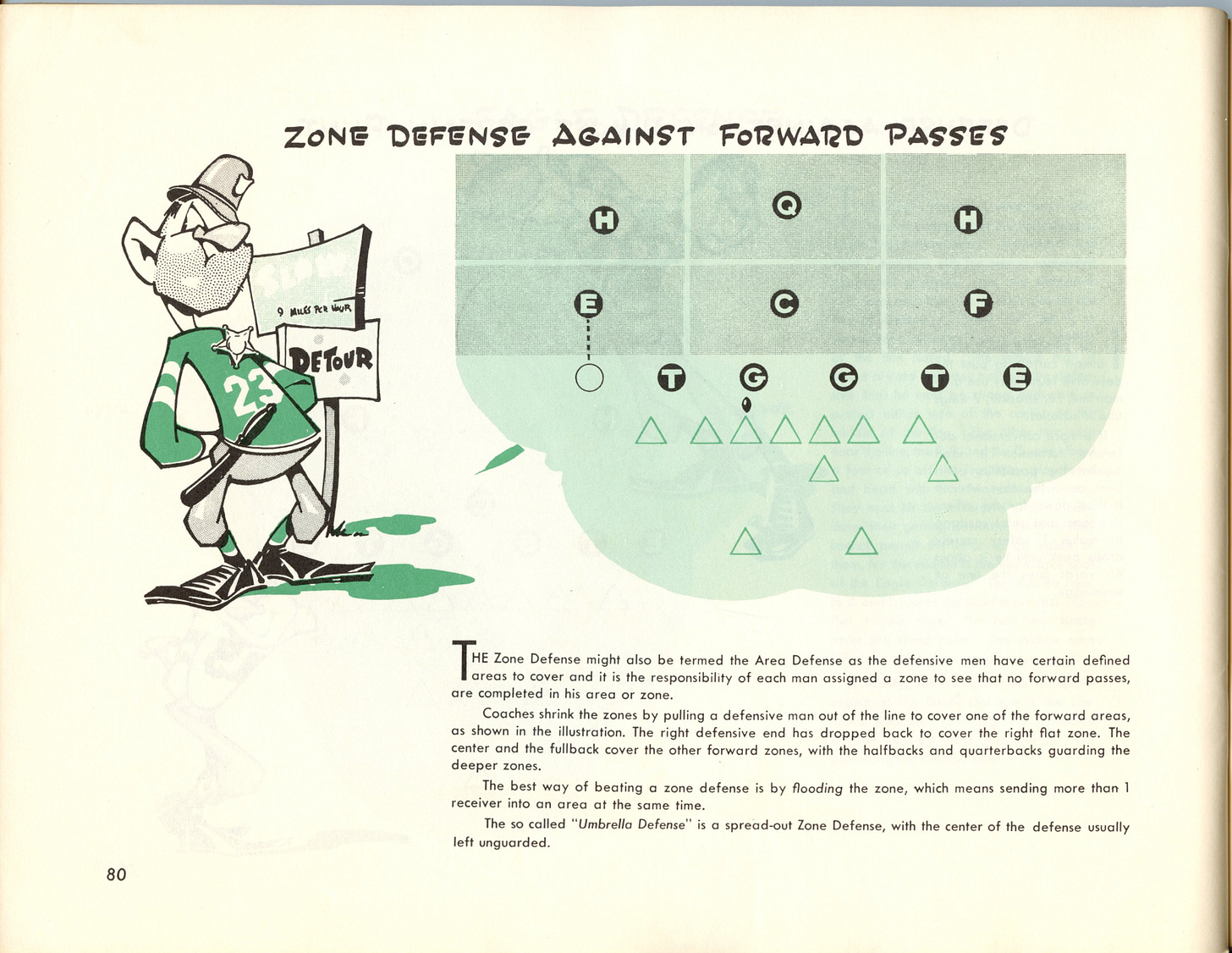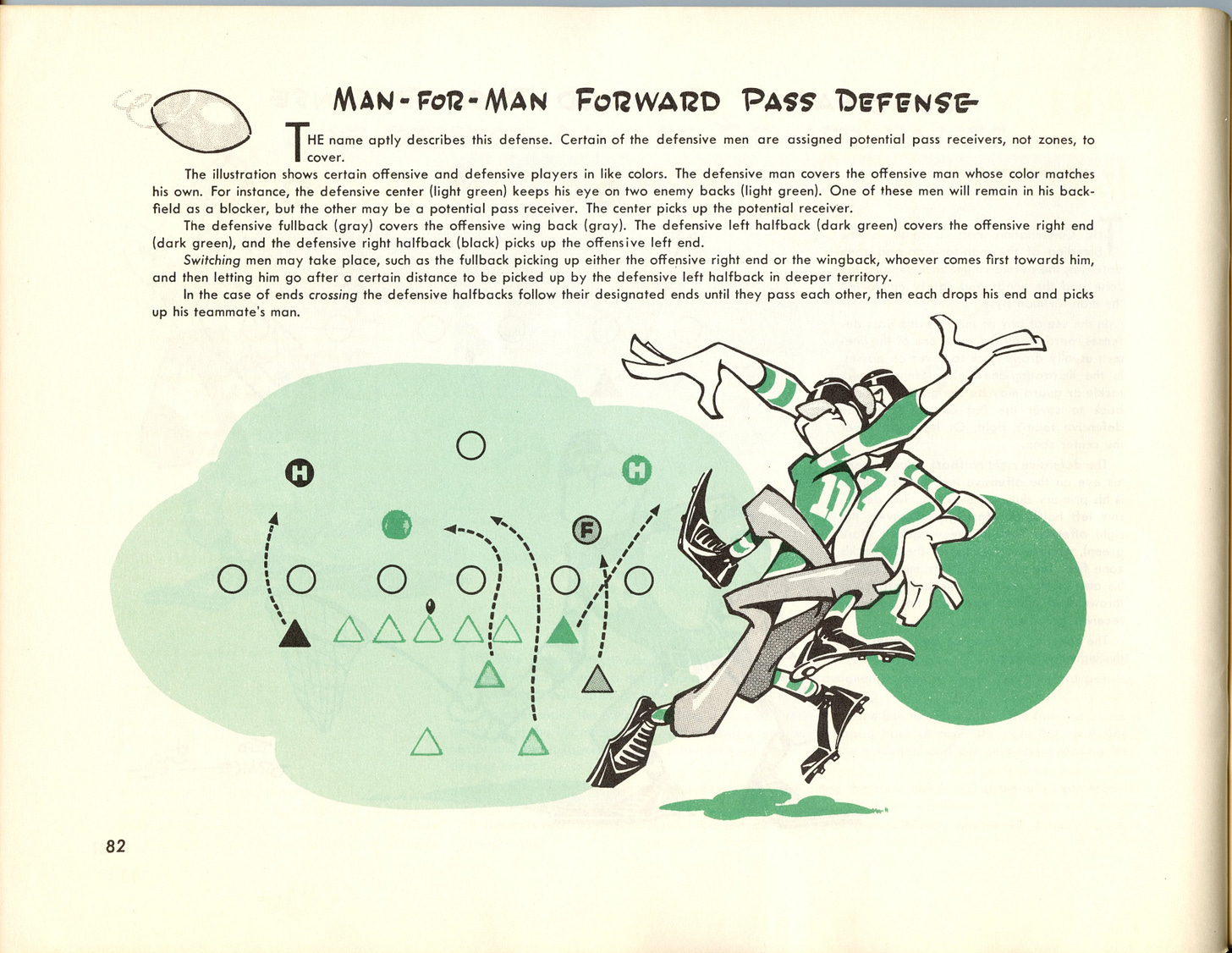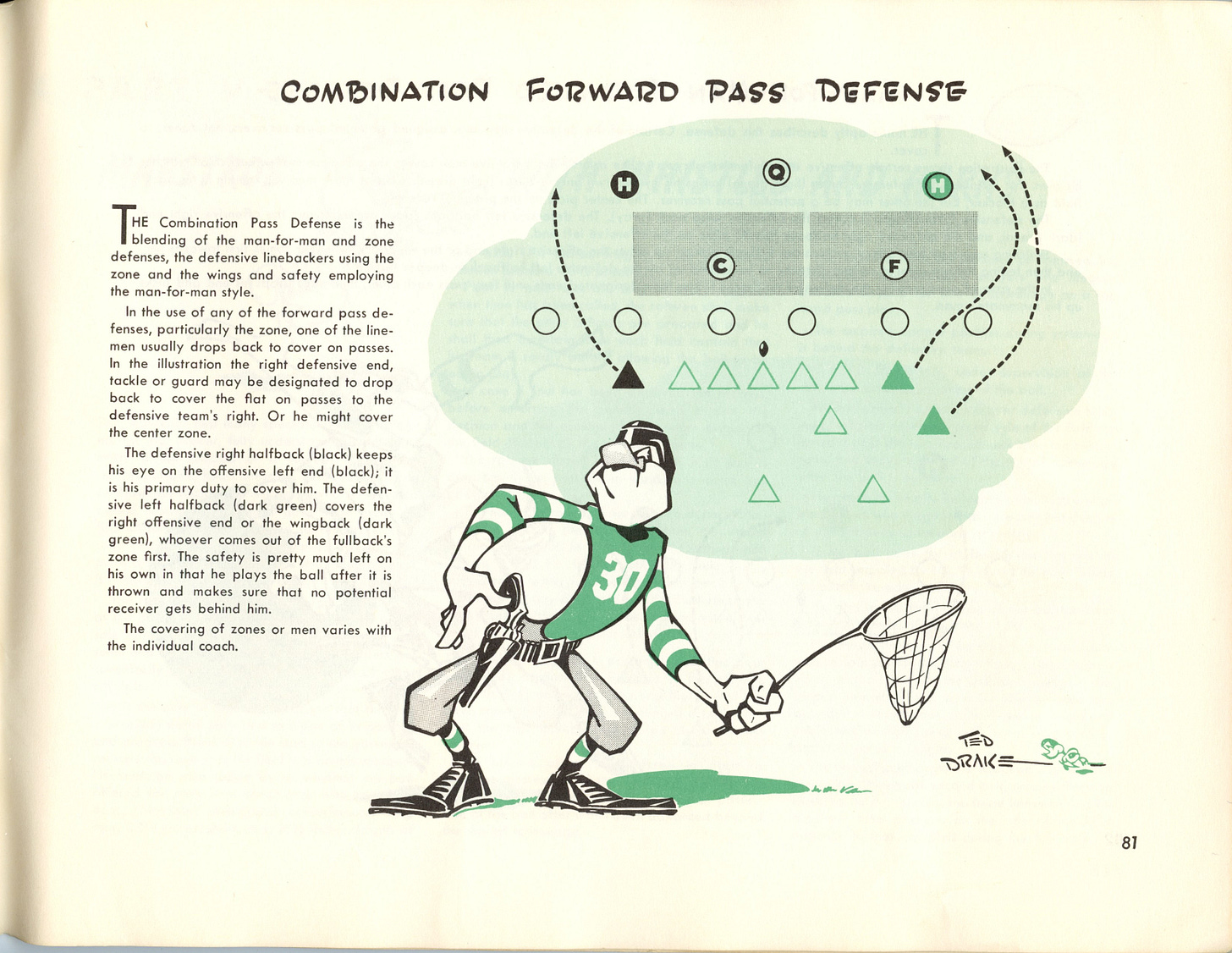Today's Tidbit... Pass Defense in 1947 or 1955
This is the sixth in a series concerning Everybody's Football, a Massachusetts Mutual Life advertising premium from 1955. The book explains various elements of the game as it existed at that time. Previous stories from the series include:
The introduction the T formation in 1940 and it subsequent success forced defenses to react to the quick hitting interior running plays and the enhanced passing that came from the use of the motion man or his alignment as a flanker. Spreading the field, or at least, threatening to do so pushed defenses toward five and four man fronts.
One of the most effective reactions came from the Eagle defense devised by Greasy Neale and the Philadelphia Eagles. Executed with a five- or four-man front, one of its innovations was to place the defensive tackles on the outside shoulder of the offensive guards, with the intent to control the guard-tackle gaps.
The two or three linebackers remained close to the line, while the four backfielders formed an umbrella to defend the pass. The New York Giants of the 1950s evolved the Eagle into the 4-3 Umbrella while Tom Landry served as their coordinator.
Defenses distinguished between zone and man coverage by 1920, but yesterday’s review of defensive formations showed they often used 6- and 7-man lines, so the size of each zone could be sizable and vulnerable to flood patterns that put more receivers in a zone than could be reasonably covered.
Man coverage was simpler in many respects, but could be threatened by routes that crossed one another, as seen on the right side of the image below.
Combinations of zone and man defenses helped solve some zone and man challenges, but teams had to keep their schemes relatively simple in the days of single-platoon football. They lacked the practice time to implement more complex offensive and defensive schemes.
The final story in the series covering the game’s officials will run tomorrow.
Football Archaeology is reader-supported. Click here to buy one of my books, donate, or otherwise support the site.





